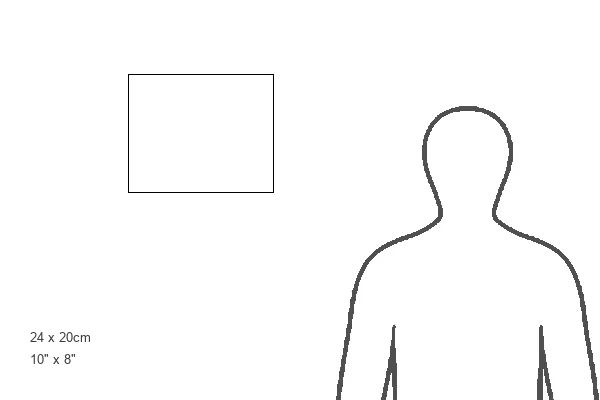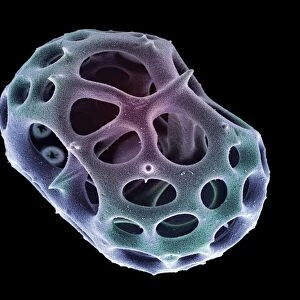Mouse Mat : Radiolarian planktonic protozoan, SEM
![]()

Home Decor from Science Photo Library
Radiolarian planktonic protozoan, SEM
Radiolarian protozoan. Coloured scanning electron micrograph (SEM) of the shell (test) of an unidentified radiolarian protozoan. This is a single-celled organism that forms part of the marine plankton. It builds this silicon-rich skeleton around itself for protection and support. It captures its prey, other single-celled organisms, by extending pseudopodia (false legs) of cell cytoplasm through the holes in its skeleton. Plankton forms the basis of most marine ecosystems. Magnification unknown
Science Photo Library features Science and Medical images including photos and illustrations
Media ID 6470435
© STEVE GSCHMEISSNER/SCIENCE PHOTO LIBRARY
Plankton Planktonic Protozoa Protozoan Radiolaria Radiolarian Test
Mouse Pad
Bring some life into your office, or create a heartfelt gift, with a personalised deluxe Mouse Mat. Made of high-density black foam with a tough, stain-resistant inter-woven cloth cover they will brighten up any home or corporate office.
Archive quality photographic print in a durable wipe clean mouse mat with non slip backing. Works with all computer mice
Estimated Product Size is 24.2cm x 19.7cm (9.5" x 7.8")
These are individually made so all sizes are approximate
Artwork printed orientated as per the preview above, with landscape (horizontal) or portrait (vertical) orientation to match the source image.
EDITORS COMMENTS
This print from Science Photo Library showcases the intricate beauty of a radiolarian planktonic protozoan. The coloured scanning electron micrograph (SEM) reveals the shell, or test, of this unidentified single-celled organism that thrives in marine plankton. Radiolarian protozoans construct their silicon-rich skeletons as a means of protection and support within their watery habitat. Through these shells, they extend pseudopodia - false legs made up of cell cytoplasm - to capture prey consisting of other single-celled organisms. The magnification level used to capture this image remains unknown, but it allows us to appreciate the remarkable details and complexity present in even the tiniest creatures inhabiting our oceans. Plankton plays an essential role as the foundation for most marine ecosystems. These microscopic organisms form a crucial part of the food chain, sustaining larger aquatic life forms such as fish and whales. Science Photo Library offers us an opportunity to explore nature's wonders through its vast collection of images like this one. This particular photograph not only highlights the extraordinary world hidden beneath our seas but also serves as a reminder that there is still so much left undiscovered and awe-inspiring about our planet's wild life and natural phenomena.
MADE IN AUSTRALIA
Safe Shipping with 30 Day Money Back Guarantee
FREE PERSONALISATION*
We are proud to offer a range of customisation features including Personalised Captions, Color Filters and Picture Zoom Tools
SECURE PAYMENTS
We happily accept a wide range of payment options so you can pay for the things you need in the way that is most convenient for you
* Options may vary by product and licensing agreement. Zoomed Pictures can be adjusted in the Cart.



